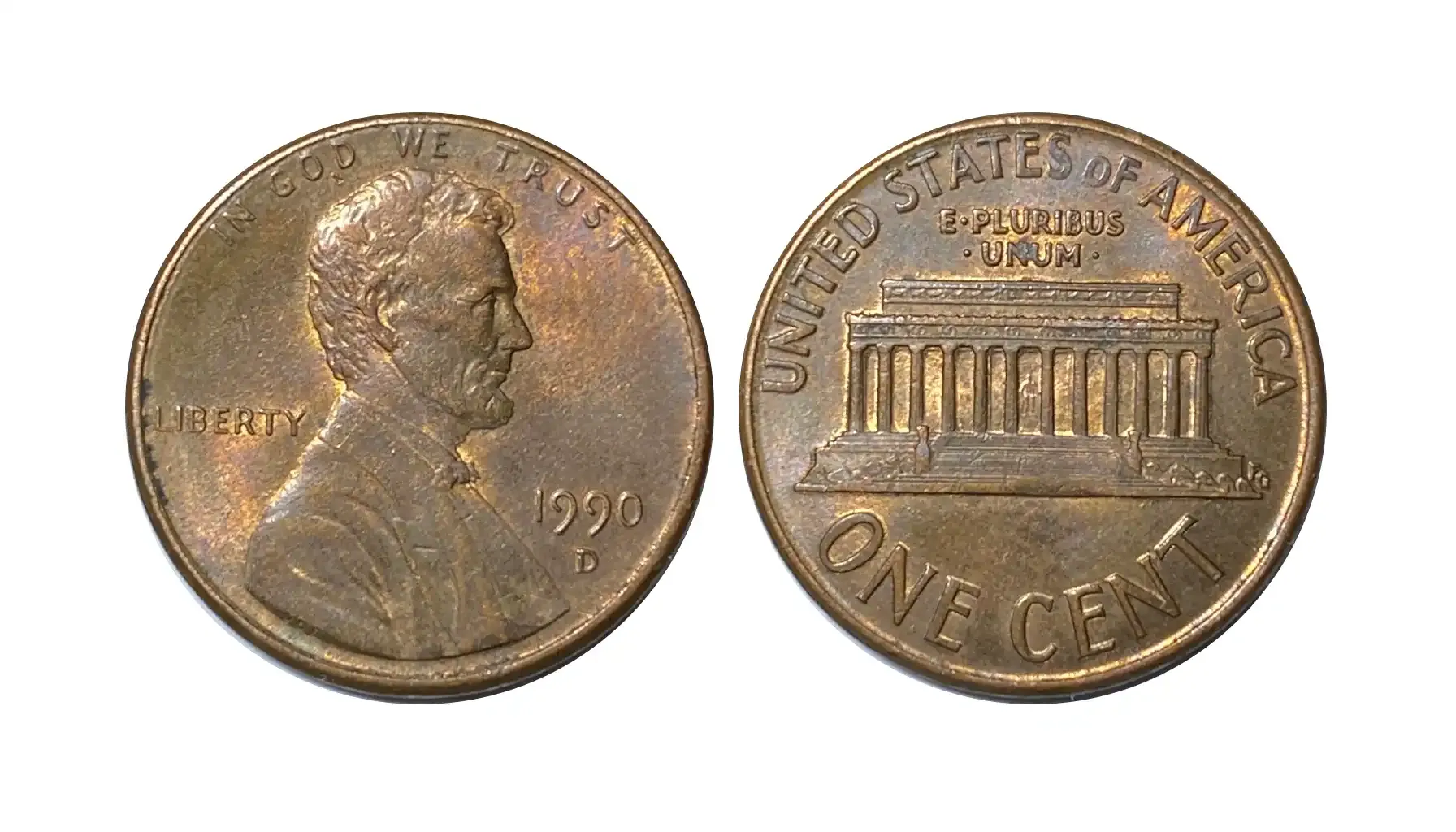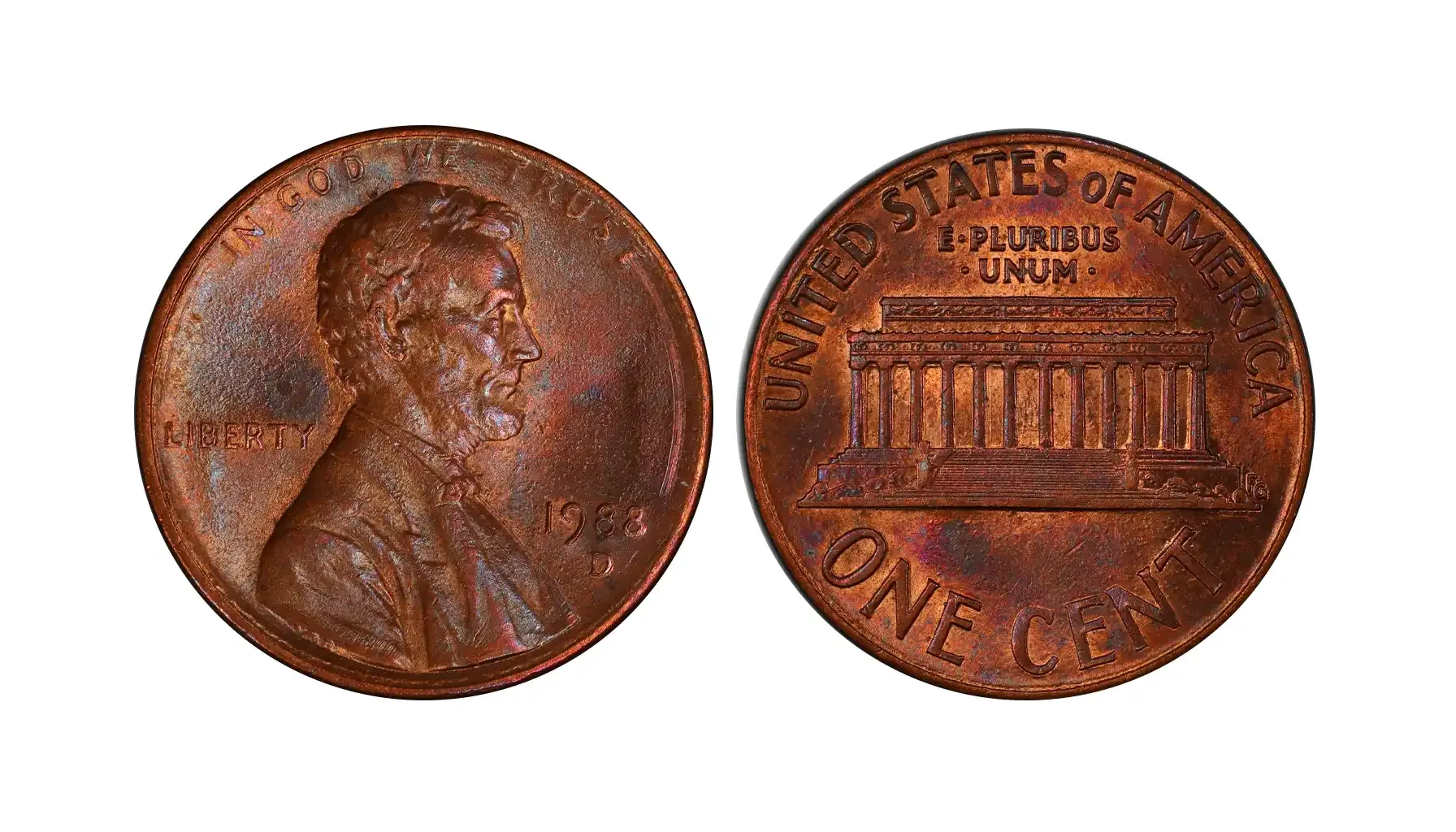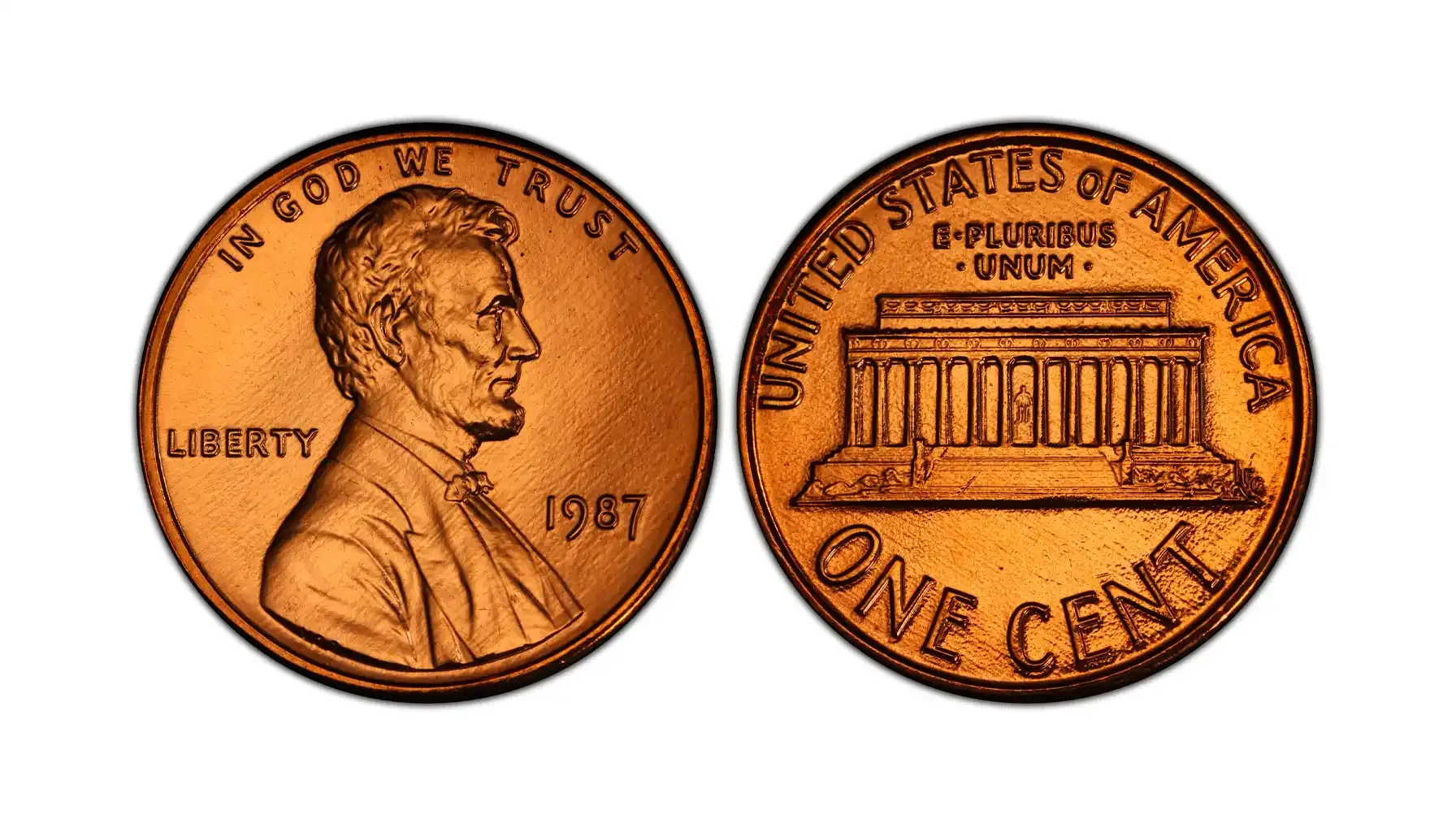Contents:
A dime from 1914. Could you imagine how much it went through? Multiple wars, multiple leaders, multiple crises. A dime like this should be worth many dollars if it’s preserved well.
How much is a 1914 dime worth? You can read about this legendary coin’s grading and market value in this article!
The best app to check coin value is here. It can give you the 1914 dime value right away!
1914 Barber Dime Design
This coin has a second name, 1914 Mercury dime, named after its inspiration: Mercury, the messenger god, and his winged hat. The designer, Charles Barber (the coin is named after him), wanted to portray freedom through this winged piece.
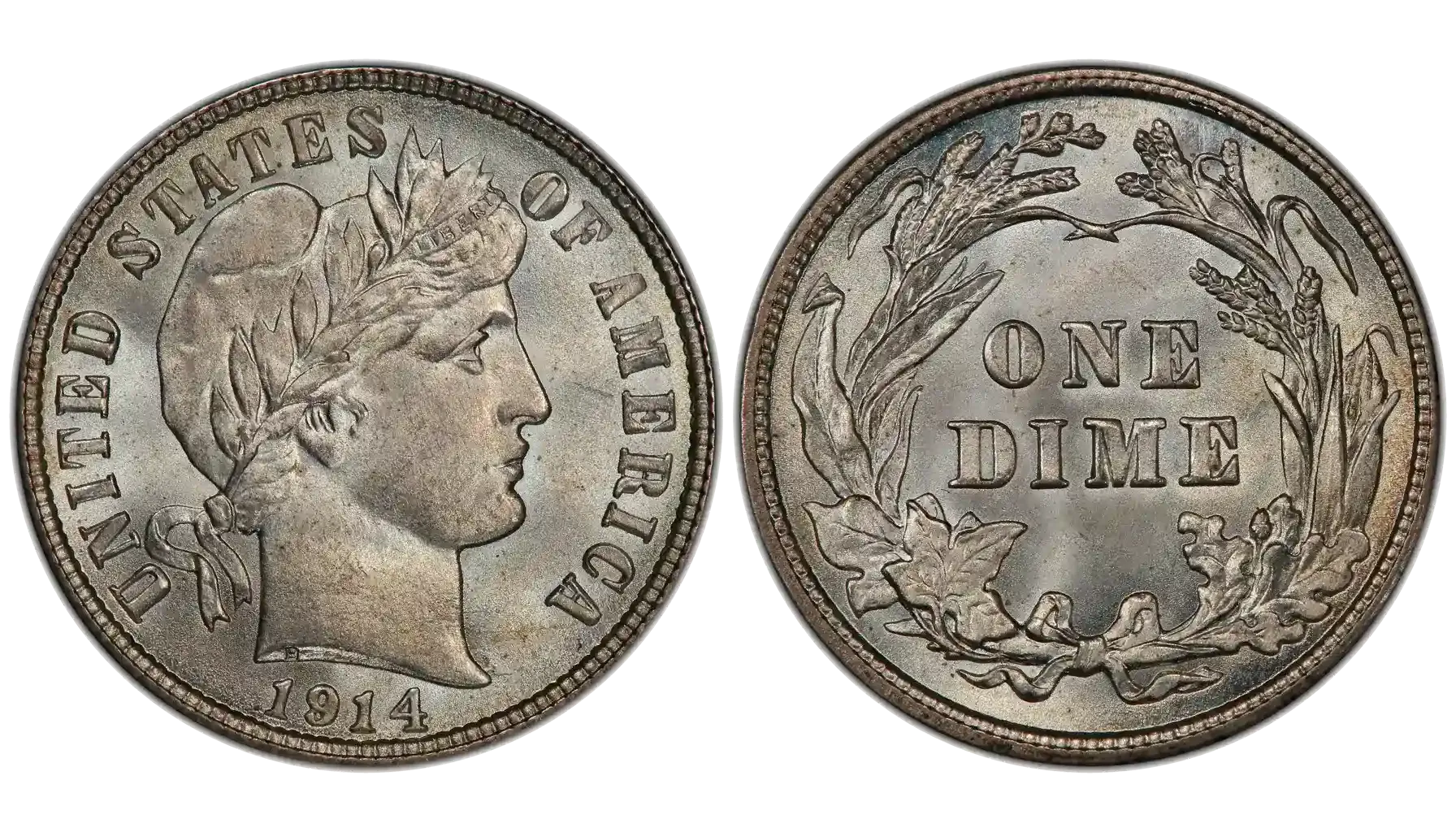
Observe: A portrait of Lady Liberty wearing a winged cap. Inscriptions “UNITED STATES OF AMERICA” arch the top edge. The year of issue is at the bottom (1914).
Reverse: A wreath, tied with a ribbon. Inscriptions, “ONE DIME” are right in the centre.
The main characteristics of the 1914 silver dime | |
Country | United States |
Years of Minting | 1892-1916 |
Type: | Standard circulation |
Shape: | Round |
Composition and metal content | 99% Silver |
Diameter | 17.9 mm |
Weight | 2.5 grams |
The Mints | The Philadelphia Mint, The Denver Mint, The San Francisco Mint, The New Orleans Mint |
1914 Barber Dime Varieties
Pricing depends on the varieties. Some are rare and therefore worth more.
Barber Dime is distinguished by its mint mark. The mint mark signifies the place where the piece was made. The 1914 dime mint mark location is on the reverse, bottom, under the ribbon.
According to the mint marks, there are:
1914 “No mint mark” dimes (made in Philadelphia)
1914 “D” dimes (made in Denver)
1914 “S” dimes (made in San Francisco)
Fun fact: there used to be one more, “O” dime *stands for the New Orleans Mint. But when the 1910 release came, New Orleans no longer made this dime. E.g., the 1911 Barber Dime had no “O” marks.
1914 Dime No Mint Mark Value
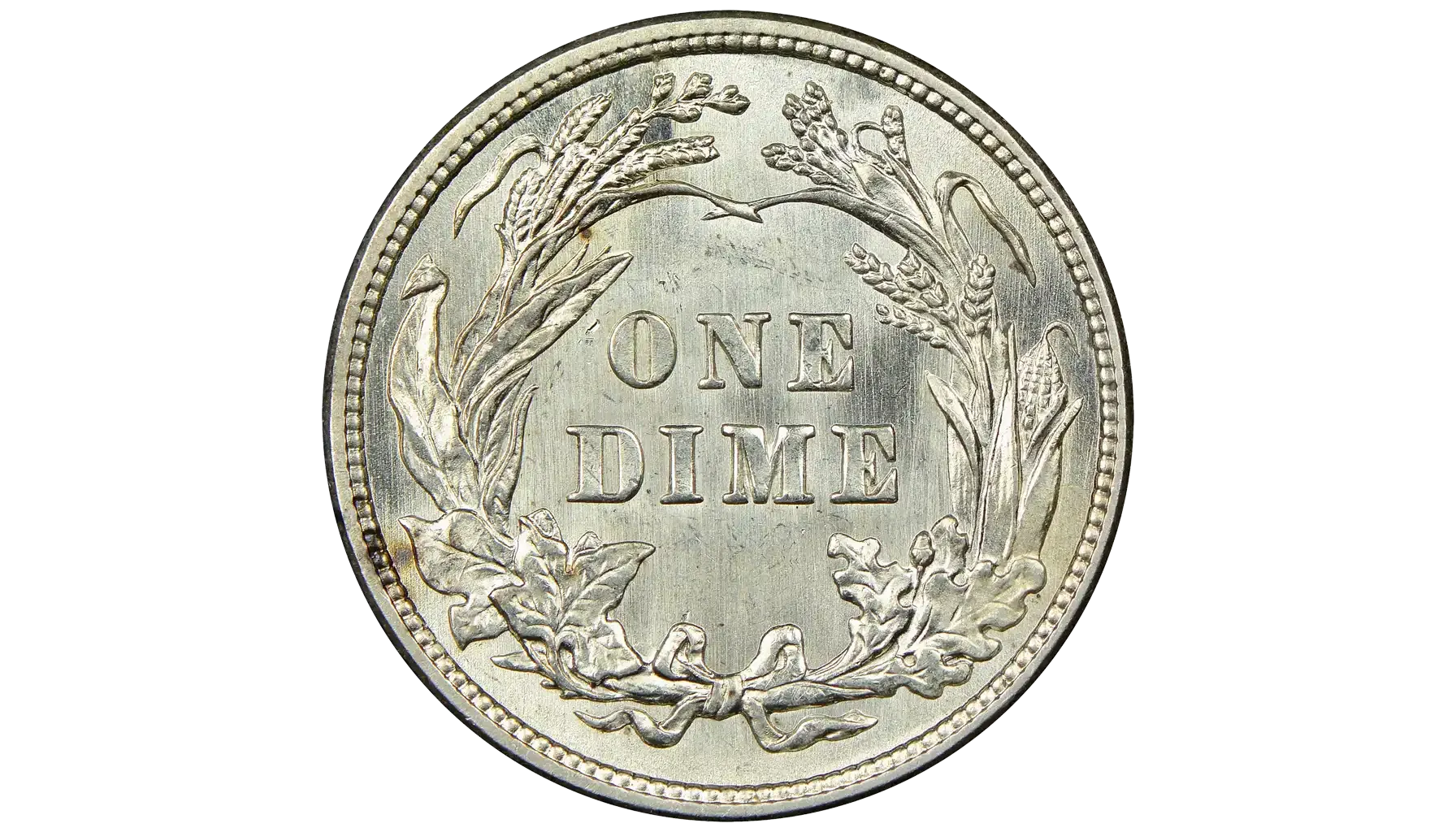
Look for: A blank space on the coin’s reverse.
Mintage: 17,360,230.
Estimated Value: ~$5–$7 (graded “Good”).
The most minted piece. The least rare variety.
1914 D Dime Value
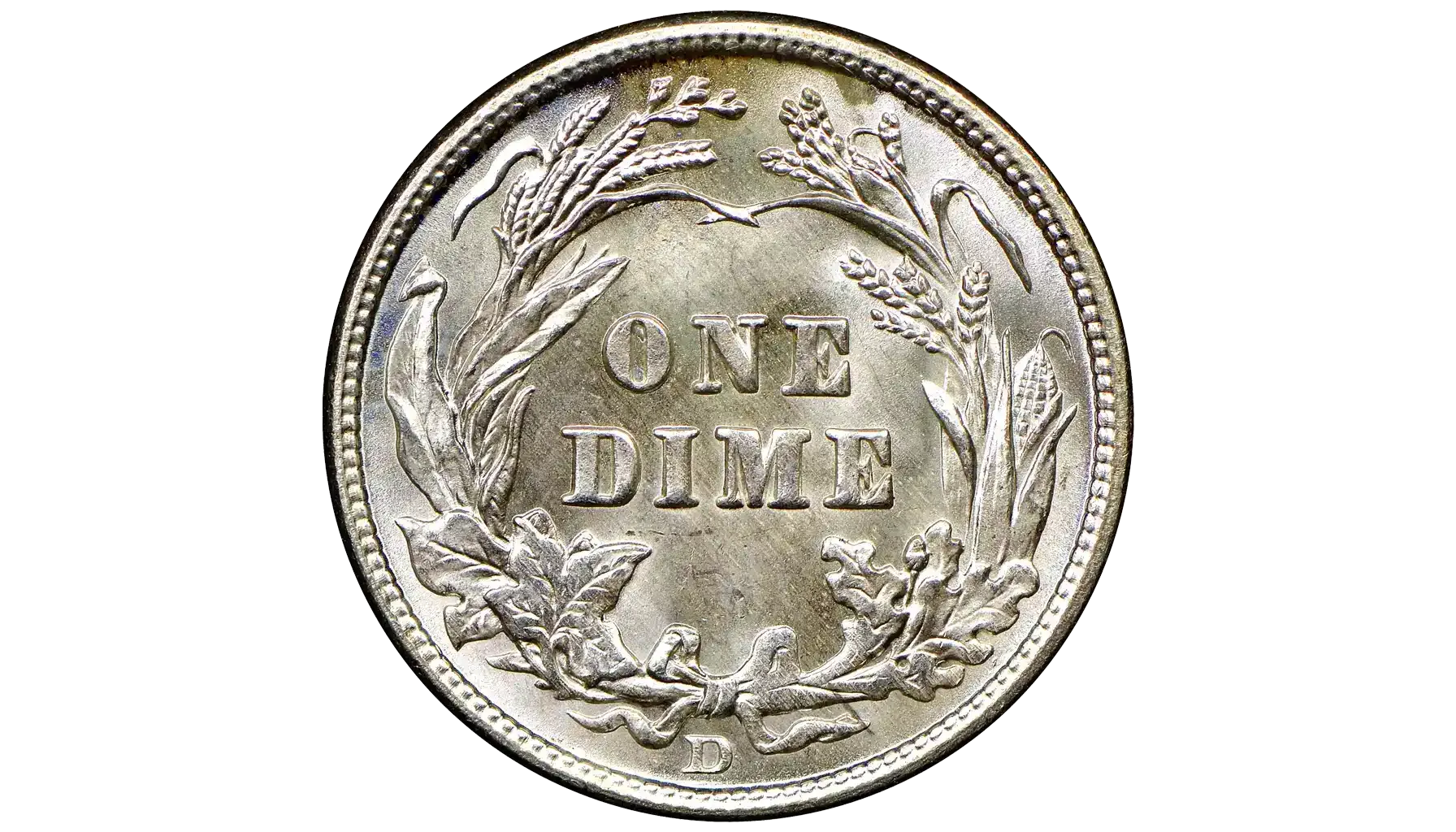
Look for: A letter “D” on the coin’s reverse.
Mintage: 11,908,000.
Estimated Value: ~$6–$10 (graded “Good”).
The 1914 D Barber dime value is a bit higher compared to the Philadelphia edition. Mostly due to a smaller mintage.
1914 S Dime Value
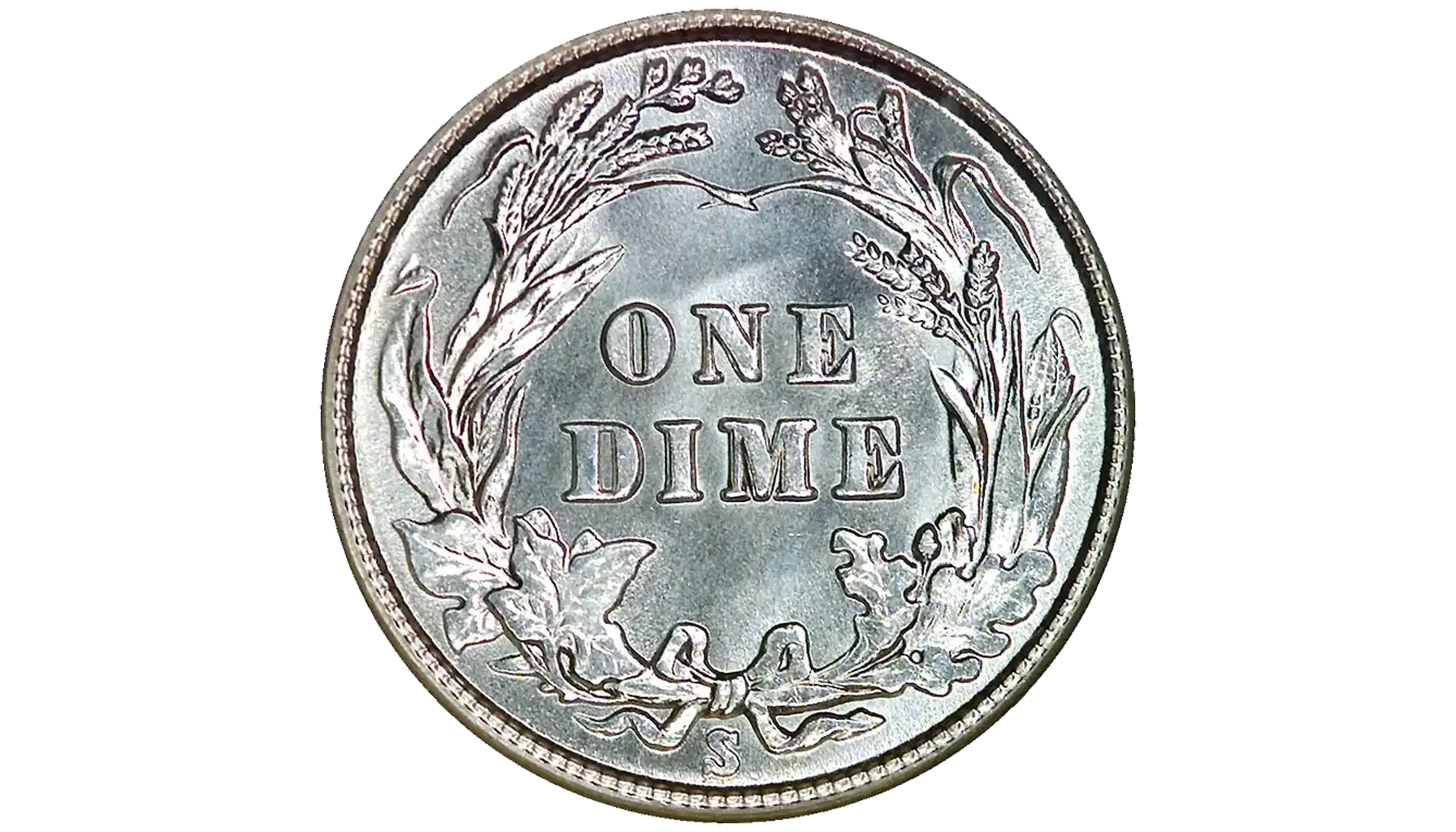
Look for: A letter “S” on the coin’s reverse.
Mintage: 2,100,000.
Estimated Value: ~$20–$30 (graded “Good”).
“S” pieces had the smallest mintage. Therefore, it’s the priciest. Though it’s not a very rare coin compared to many other dimes.
1914 Mercury Dime Grading
Coin Grading is a common practice. It lets you know if your coin is truly worth something. What determines the grading score? Basically, the better preserved the piece, the higher its price.
The 1914 Barber series commonly has Good to Very Good grades. Higher grades are outlined and quite desirable.
Grade | Description |
Good (G-4) | Very heavy wear. Outline of Liberty's head is visible, but no details. Wreath on the reverse is smooth. |
Very Good (VG-8) | The lettering is partially visible. Some wreath details are preserved. |
Fine (F-12) | The whole lettering is readable, though faint. Some hair and wreath details preserved. Rim is strong. |
Very Fine (VF-20) | The inscription is clear. Light wear on Liberty’s cheek. Hair and wreath details are more complete. |
Extremely Fine (EF-40) | Slight wear on high points only. Strong hair detail and wreath definition. Eye-appealing |
About Uncirculated (AU-50 to AU-58) | Nearly full detail with only slight friction on the highest points. Almost full mint luster. |
Mint State (MS-60 to MS-67) | No wear. Full strike and original mint luster. Graded by PCGS/NGC. Beautiful, collectible condition. |
1914 Mercury Dime Value
Let’s use all the data we gathered to make a value table. 1914 dime value today:
Grade | 1914 (No Mint Mark) | 1914-D (Denver) | 1914-S (San Francisco) |
Good (G-4) | $5–$7 | $6–$10 | $20–$30 |
Very Good (VG-8) | $8–$12 | $12–$18 | $30–$45 |
Fine (F-12) | $10–$15 | $15–$25 | $40–$60 |
Very Fine (VF-20) | $20–$30 | $30–$45 | $70–$110 |
Extremely Fine (EF-40) | $40–$60 | $60–$90 | $120–$200 |
About Uncirculated (AU-50) | $80–$120 | $120–$180 | $250–$450 |
Mint State (MS-60) | $150–$200 | $200–$350 | $500–$900 |
Mint State (MS-65) | $300–$500+ | $400–$600+ | $1,000–$1,500+ |
Keep in mind that the market is fickle. It’s summer 2025, but who knows how prices will change next year?
What can you do if your coin doesn’t have a good grade? Turn to the opposite, then. If your coin is in a bad state, maybe it has a good-selling error?
1914 Dime Error List
Even modern coins often come off the press with errors. The technology back in 1914 was less developed. More errors for us, then.
Some most common error coins might have are:
Off-Center strike
Broadstrike
Die failure
Off-Center Strike
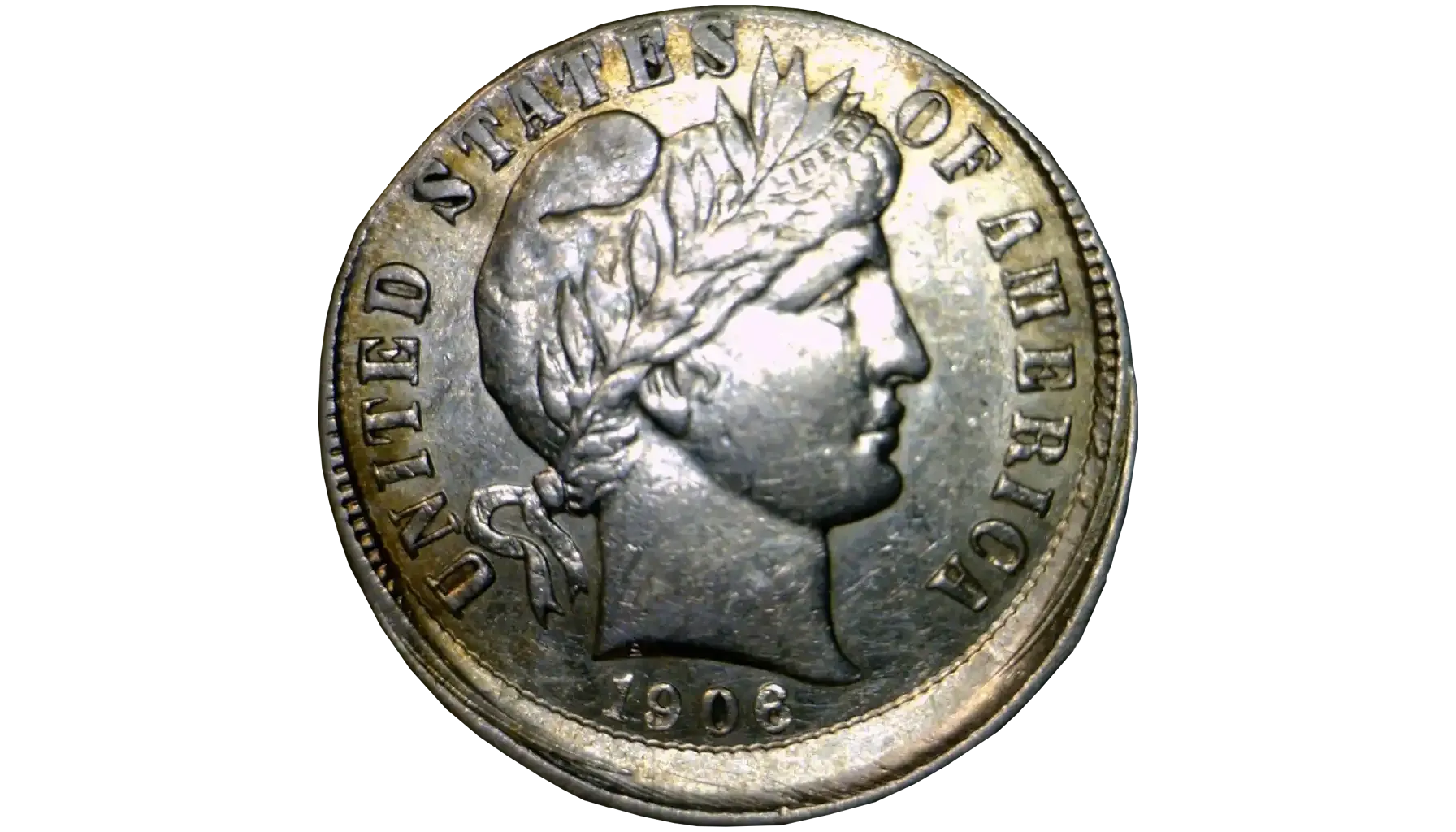
How to identify: The design appears shifted to the side. One corner might be completely blank.
Error cause: When the coin was pressed, it was put too far away.
Estimated value: $15-100, depending on the severity
Broadstrike
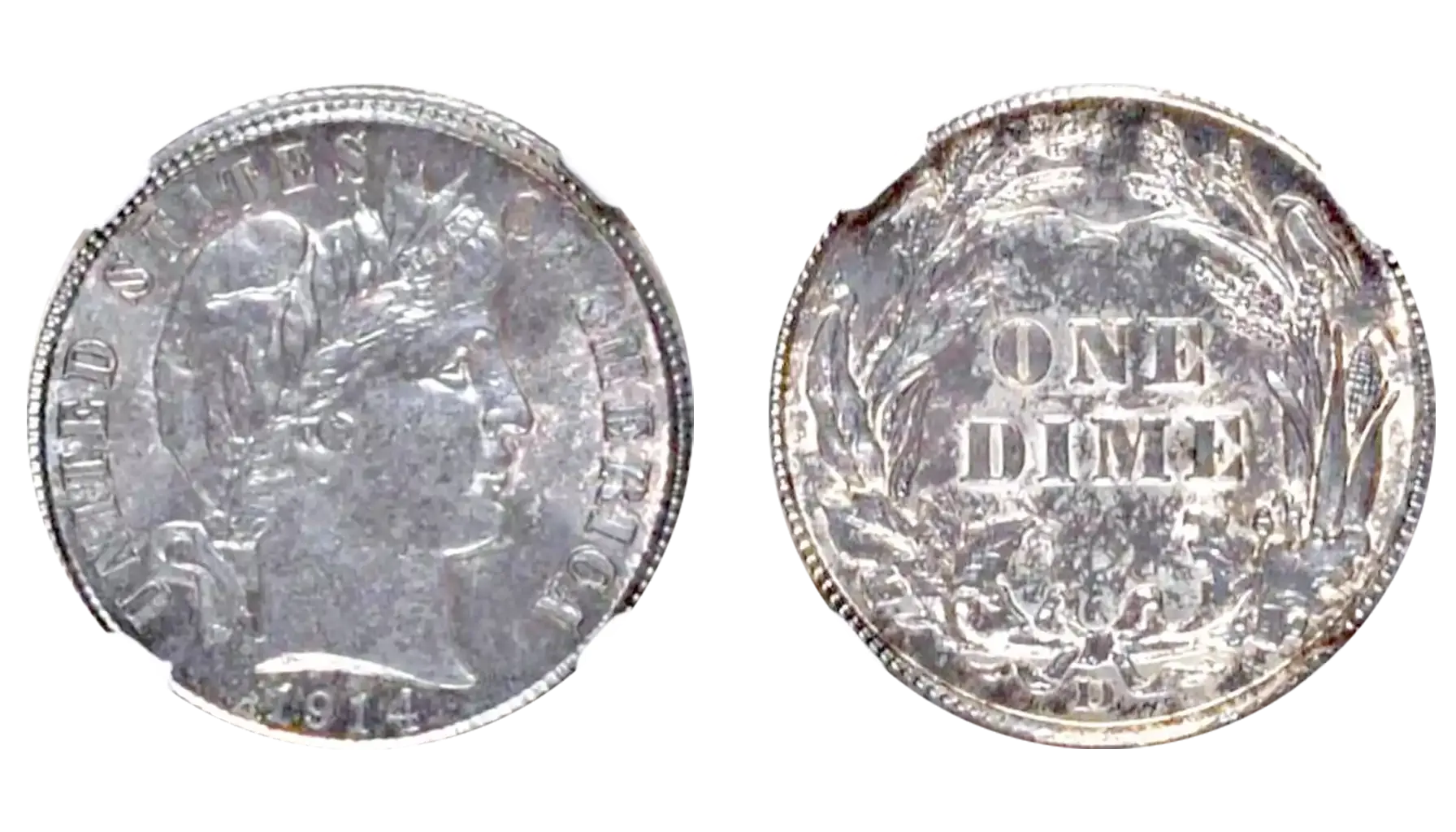
How to identify: The coin has a larger diameter. It has no edge reeding or rim.
Error cause: A collar normally shapes the edges. If it’s missing, the metal spreads too far.
Estimated value: $200+, depending on the severity.
Die Failure
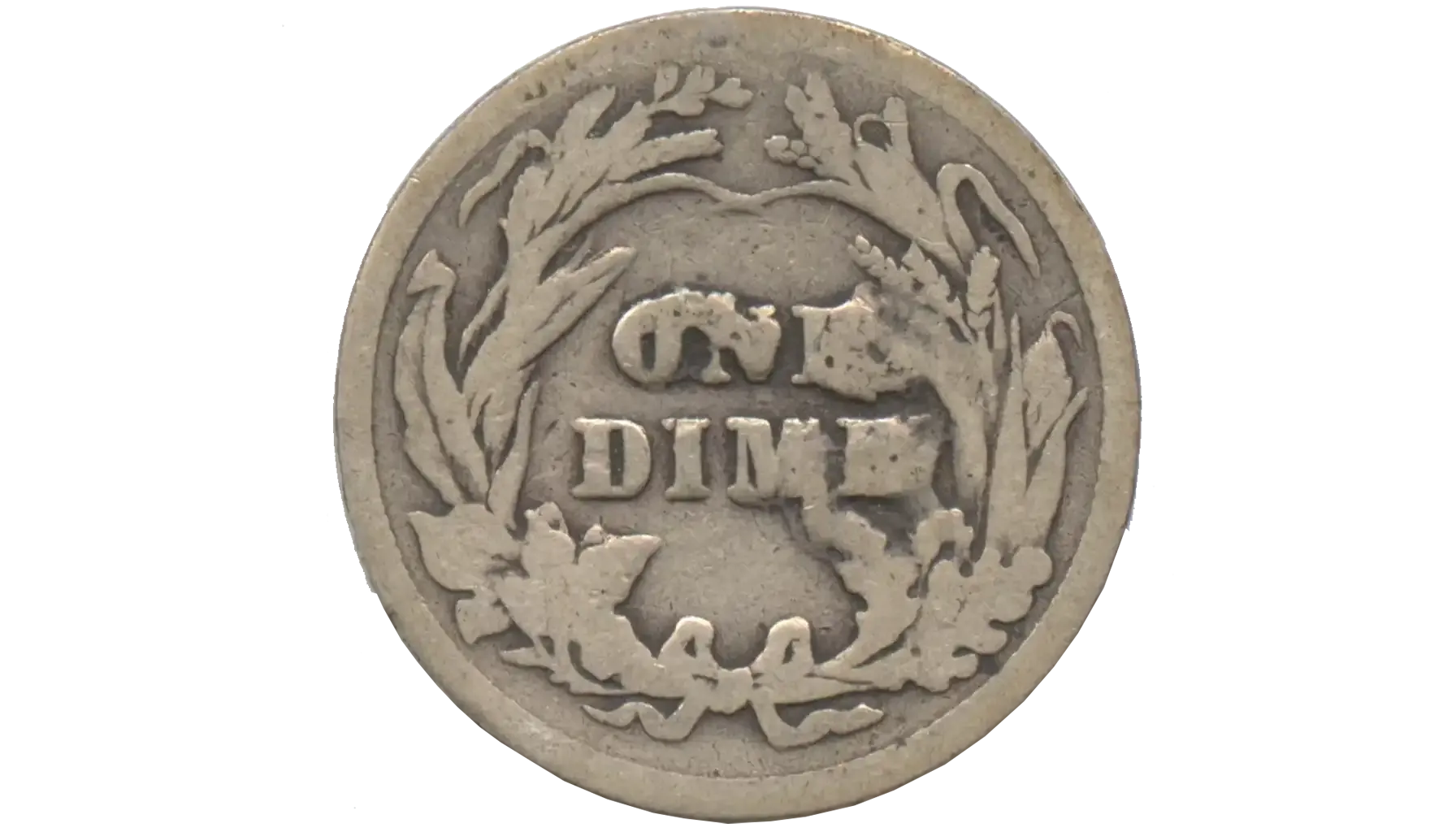
How to identify: Blobs and deformities on the surface. They might appear as cracks.
Error cause: The metal die used to strike coins develops cracks, breaks, or deteriorates due to wear or damage.
Estimated value: $10-150, depending on the severity.
Pricing Guide
We promised a step-by-step pricing guide, and we keep our promise. It works for 1914 dime and any other piece.
1. Identify the Coin. Collectors are mainly interested in this data:
Country (e.g., United States)
Denomination (e.g., dime, quarter, penny)
Year (e.g., 1914)
Mint mark (e.g., no mark, D, S)
Grade (e.g., circulated/uncirculated)
2. Determine the Grade (Condition). Use a coin grading scale (G-4 to MS-70) to assess wear and sharpness:
G-4: Very worn
F-12: Moderate wear
VF-20: Light wear
EF-40: Very light wear
AU-50: Almost uncirculated
MS-60 and higher: Mint State
3. Find the average price for your collectible. Check price guides via:
PCGS Price Guide
NGC Price Guide
eBay listings
4. Consider market factors. Maybe it’s a good time to sell? Maybe it’s bad? Look at the market trends and keep in mind:
Demand: Popular coins or types may sell for more
Rarity: Lower mintage = higher value
Errors: Coins with genuine mint errors can multiply in value
Certification: Graded coins by PCGS/NGC often sell for more
5. If you decide to sell the coin, take good photos of it:
Well-lit photos help build trust and attract buyers
Preferably make a photo in the morning or under lamp light
Capture all the necessary details (from the first step)
6. Choose the platform and sell!
eBay has a ton of coin sales, and it’s very convenient to compare what you’re offering with others. But it’s not 100% safe
Coin auctions are super-safe, but are usually done offline and demand time + preparation
By reading this article, you basically went through the 3 hardest steps. Want to sell your coin collection? We wish you luck, then!
But before you leave, we’d like to recommend to you one tool that helps you to identify and evaluate coins.
Coin ID Scanner
Coin ID Scanner сan tell the coin’s denomination, country, date, and value. All it takes is one photo and a couple of seconds.
The app uses AI for identification, and the accuracy of the AI technology is amazing. The app provides detailed information that is helpful for any collector.
As for collecting, the app records your coins and puts them in a virtual collection. Even after you sell your piece, it will always stay on your phone.
For those beginning their numismatic journey, we’d recommend reading many of the blogs integrated into the app. They are very helpful and offer professional insight on selling, collecting. Professionals will appreciate some numismatic news and historical profiles.
Coins ID Scanner is free and available on iOS and Android.
